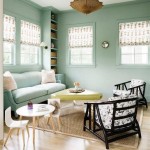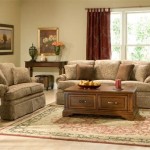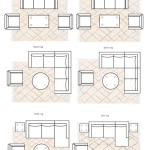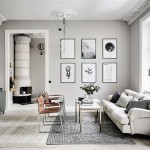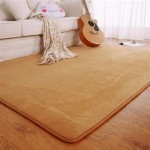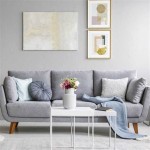Living Room Furniture Decorating Ideas: Creating a Harmonious and Functional Space
The living room serves as a central hub for many households. It is a space for relaxation, entertainment, and connection. Consequently, selecting and arranging living room furniture involves more than simply filling a room; it requires a thoughtful approach to creating a functional and aesthetically pleasing environment. This article explores various living room furniture decorating ideas, focusing on key principles to achieve a harmonious and inviting space.
Effective living room design starts with understanding the room's dimensions and existing features. Consider the natural light sources, the placement of windows and doors, and any architectural details like fireplaces or built-in shelving. The size and shape of the room will significantly influence furniture selection and layout. A small living room requires furniture that maximizes space, while a larger living room allows for more expansive pieces and potentially distinct seating zones.
The architectural style of the house should inform the overall design aesthetic. A modern home might benefit from sleek, minimalist furniture, while a traditional home might call for more ornate and classic pieces. Integrating existing elements like flooring and wall color into the design process will create a cohesive and unified look.
Prioritizing Functionality and Traffic Flow
Functionality is a paramount consideration when furnishing a living room. The furniture should cater to the intended uses of the space. For example, if the living room is primarily used for watching television, comfortable seating arranged around the television is essential. If the space is more geared towards social gatherings, ample seating arranged to facilitate conversation is more appropriate. The placement of furniture should also consider the flow of traffic within the room. Avoid creating obstacles or bottlenecks that impede movement from one area to another. Clear pathways should be established, allowing for easy access to seating areas, doors, and other parts of the house.
Consider the activities that will take place in the living room. Will it primarily be used for watching movies? Hosting game nights? Reading? Each activity requires different furniture arrangements. For example, someone who enjoys reading might benefit from a comfortable armchair with a side table and good lighting. Families with children might need durable, easy-to-clean furniture and ample floor space for play.
The placement of furniture should be intentional and purposeful. Avoid simply placing furniture against the walls, as this can make the room feel smaller and less inviting. Instead, experiment with different arrangements to create a more dynamic and engaging space. Anchoring furniture with a rug can help define seating areas and create a sense of cohesion.
Scale is also crucial. Overly large furniture can overwhelm a small living room, while undersized furniture can get lost in a larger space. Measure the room carefully and choose furniture that is proportionate to the dimensions of the space. Consider the height of the furniture as well. A mix of high and low pieces can add visual interest.
Storage is another essential functional element. Living rooms often accumulate clutter, so incorporating storage solutions is vital. Coffee tables with built-in drawers, ottomans with storage compartments, and bookshelves can help keep the space organized and tidy. Utilizing vertical space with shelving units is also an effective way to maximize storage in a smaller living room.
Selecting the Right Furniture Pieces
The selection of furniture pieces is critical to the overall success of the living room design. The main seating elements, typically a sofa and armchairs, are often the focal point of the room. Choose pieces that are both comfortable and aesthetically pleasing. Consider the upholstery material, the frame construction, and the overall style of the furniture. Neutral colors are often a safe choice, as they are versatile and can be easily paired with other colors and patterns. However, don't shy away from incorporating pops of color with accent pillows, throws, or artwork.
The coffee table serves as a central gathering point in the living room. Choose a coffee table that is the right size and shape for the seating area. Consider the material of the coffee table as well. A wooden coffee table can add warmth and texture to the room, while a glass coffee table can create a more modern and open feel. The coffee table should also be functional, providing a surface for drinks, snacks, and books. Adding decorative elements like trays, candles, or plants can enhance its aesthetic appeal.
Accent tables, such as side tables and console tables, provide additional surfaces for lamps, books, and decorative objects. Choose accent tables that complement the other furniture in the room and that are the right height for their intended use. A side table next to an armchair should be high enough to be easily accessible, while a console table behind a sofa can serve as a decorative backdrop.
Rugs are an essential element in any living room design. They help define seating areas, add warmth and texture, and tie the room together. Choose a rug that is the right size and shape for the space. The rug should be large enough to anchor the furniture, but not so large that it overwhelms the room. Consider the color and pattern of the rug as well. A neutral rug can be a versatile choice, while a patterned rug can add visual interest and personality. The material of the rug is also important. Wool rugs are durable and comfortable, while synthetic rugs are more affordable and easy to clean.
Lighting is often overlooked but is essential for creating a welcoming and functional living room. A combination of ambient, task, and accent lighting is ideal. Ambient lighting provides overall illumination for the room, while task lighting provides focused light for specific activities, like reading. Accent lighting highlights decorative objects and architectural features. Lamps are a great way to add both task and accent lighting to the living room. Choose lamps that complement the style of the furniture and that provide the right amount of light. Dimmers can also be used to adjust the lighting to create different moods.
Incorporating Personal Style and Decorative Accents
While functionality and layout are crucial, the living room should also reflect the homeowner's personal style. Incorporating decorative accents that showcase individual interests and preferences will personalize the space. This can include artwork, photographs, sculptures, and other decorative objects. Choose pieces that are meaningful and that bring joy. Arrange these items in a way that is visually appealing and that creates a sense of harmony.
Artwork can add color, texture, and personality to the living room. Choose pieces that complement the style of the furniture and that reflect the homeowner's taste. Hang artwork at eye level and consider the size and scale of the pieces in relation to the wall space. A gallery wall can be a great way to display a collection of smaller pieces.
Pillows and throws are an easy and affordable way to add color, texture, and comfort to the living room. Choose pillows and throws that complement the furniture and the overall color scheme of the room. Mix and match different colors, patterns, and textures to create a visually interesting and inviting space. Arrange pillows on the sofa and armchairs in a way that is both comfortable and aesthetically pleasing.
Plants can bring life and vibrancy to the living room. Choose plants that are appropriate for the amount of light in the room and that complement the style of the furniture. Place plants on shelves, tables, or in decorative pots on the floor. Plants can also help to purify the air and create a more relaxing and inviting atmosphere.
Window treatments, such as curtains, blinds, and shades, can add privacy, control light, and enhance the aesthetic appeal of the living room. Choose window treatments that complement the style of the furniture and the overall color scheme of the room. Consider the amount of light that you want to allow into the room and choose window treatments that will provide the desired level of privacy. Curtains can add softness and texture to the room, while blinds and shades can provide a more modern and streamlined look.
The careful selection and arrangement of living room furniture is fundamental to creating a space that is beautiful, functional, and reflects the homeowner's personal style. By prioritizing functionality, traffic flow, selecting the right furniture pieces and incorporating personal style, it becomes possible to design a room that is both inviting and practical.

50 Inspirational Living Room Ideas Design
:strip_icc()/cdn.cliqueinc.com__cache__posts__212361__-2030968-1483470364.700x0c-8571e60cad7b42a981ab29ae10b5c153-497b002f87af4747b2ab38b560e7c0fd.jpg?strip=all)
How To Decorate A Living Room 20 Ideas And Common Mistakes

77 Best Living Room Decor Ideas 2024 Unique

Star Furniture

Top Home Decor Trends Best Living Room Ideas

100 Living Room Decorating Ideas Design Photos Of Family Rooms

How To Decorate A Small Living Room Forbes Home

78 Beautiful Living Room Ideas For A Timeless Look

78 Beautiful Living Room Ideas For A Timeless Look

Small Living Room Decorating Ideas Designcafe


